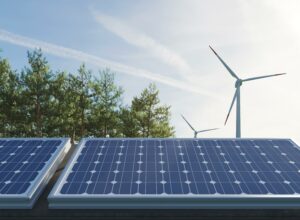Solar is not only about saving money with the help of electricity bills anymore; it is about benefiting from government-funded incentives to make clean energy more affordable and accessible to all people. Whether a household, an agricultural farm, or a small business, 2025 is the right time to adopt a solar energy system with a solid financial support system.
The PM Surya Ghar Muft Bijli Yojana offers huge savings to Kerala homes
The Government of India has one of the best plans for houses in Kerala, which is PM Surya Ghar: Muft Bijli Yojana. It provides a substantial subsidy to individuals who choose to go with the rooftop solar facility, and the people of Kerala deserve it a lot.
Key Features of the Scheme
- ₹30,000 per kW for up to 2 kW capacity rooftop solar systems
- ₹18,000 per kW for an additional 1 kW (i.e., 3 kW)
- Up to ₹78,000 subsidy
- 300 units of free electricity a month for households installing rooftop solar
The difference in this plan is that the subsidy is transferred directly into the bank. The subsidy, upon installation and validation, is deposited into the account of the beneficiary, making it convenient and transparent.
The whole process is done online on the National Portal for rooftop solar systems. The applicants are required to register by providing their electricity consumer number as well as their mobile number, choose an empanelled vendor, and follow a step-by-step application process.
In Kerala, one needs to select the KSEB-approved vendors. The vendors are qualified to verify system reliability, performance, and warranty compliance. The program also fosters local manufacturing by promoting the adoption of Made-in-India solar panels from the Approved List of Models and Manufacturers (ALMM).
Eligibility Criteria
- Must be a permanent Indian citizen
- Must have a residential property with a suitable rooftop
- Must possess an existing electricity connection
- Applicants should not have previously received any solar subsidy.
According to the Kerala Power Policy 2025, innovative methods such as virtual net metering and peer-to-peer trading will make solar adoption more inclusive, mainly for those who don’t have suitable rooftops.
Other Significant Solar Subsidy Schemes in 2025
Although PM Surya Ghar is best suited for house owners, certain government schemes in India provide useful support to other segments of users.
1. PM-KUSUM: Supporting Farmers through Solar Power
The government initiative PM-KUSUM (Kisan Urja Suraksha evam Utthaan Mahabhiyan) targets the farmers. It focuses on the use of solar energy in the agricultural sector, especially during irrigation.
It includes:
- Off-grid and grid-connected solar water pump integration
- Construction of mini-solar grids in far villages
- Adjustment of the electric or diesel pumps to the solar pumps
Financial Support System:
- 60 percent government subsidy
- The existence of 30 percent low-interest loans
- Only 10 percent is payable by the farmers.
This proposal will not only reduce the consumption of conventional fuel but also improve energy security and dependability at the rural level.
2. Grid-Connected Rooftop Solar Programme set up by MNRE
This program is administered by the Ministry of New and Renewable Energy (MNRE) and is open to both personal and institutional-type solar installations.
Subsidy Rates:
- A 40 percent subsidy on rooftop solar systems of up to 3 kW.
- A 20 percent subsidy on the installations above 3 kW up to 10 kW.
Installations must be executed by accredited MNRE vendors under approved models to be considered. This scheme can benefit housing societies, institutions, schools, and even NGOs tremendously in that their costs of running operations will be saved without undermining sustainability.
3. The PLI Scheme for Solar PV Manufacturing
The Production Linked Incentive (PLI) Scheme may not be a consumer subsidy, but it is quite important to the solar ecosystem as a whole. It has positive economic impacts on Indian manufacturers of high-efficiency solar PV modules.
Why is this important to the consumers?
An increased local production will mean better supply, quality of products, and prices. All these help in reducing the cost of the system and also lead to increased trust in the Indian-made solar technology in the long run.
Why 2025 is the Perfect Time to Go Solar in Kerala
The rising cost of electricity and growing green consciousness make solar power a great business move as well as an environmentally conscious green decision. The weather in Kerala, prone to plenty of sunlight and large roofs, makes it an excellent potential for solar adoption.
Below are reasons why 2025 is a great time:
- Liberal Government Subsidies: Up to ₹78,000 can be claimed by domestic consumers.
- Low Maintenance: After installation, the operational cost is minimal.
- Energy Independence: The liberation of up to 300 units/month minimizes dependence on the grid.
- The investment has quick returns within 3-5 years.
- Environmental Benefits: Radical curb on carbon emissions
Take the Next Step Towards Smarter Energy with GSL
Central government schemes such as PM Surya Ghar and PM-KUSUM are transforming how people in Kerala access clean and reliable energy. 2For home and farm owners everywhere, 2025 is the perfect year to make the switch, with maximum payback in finance with minimal inconvenience. ur mission at GSL Energy Solutions is to make you energy-smart. Whether it is advice or paperwork, or professional installation, we will make your solar experience smooth, profitable, and visionary.






